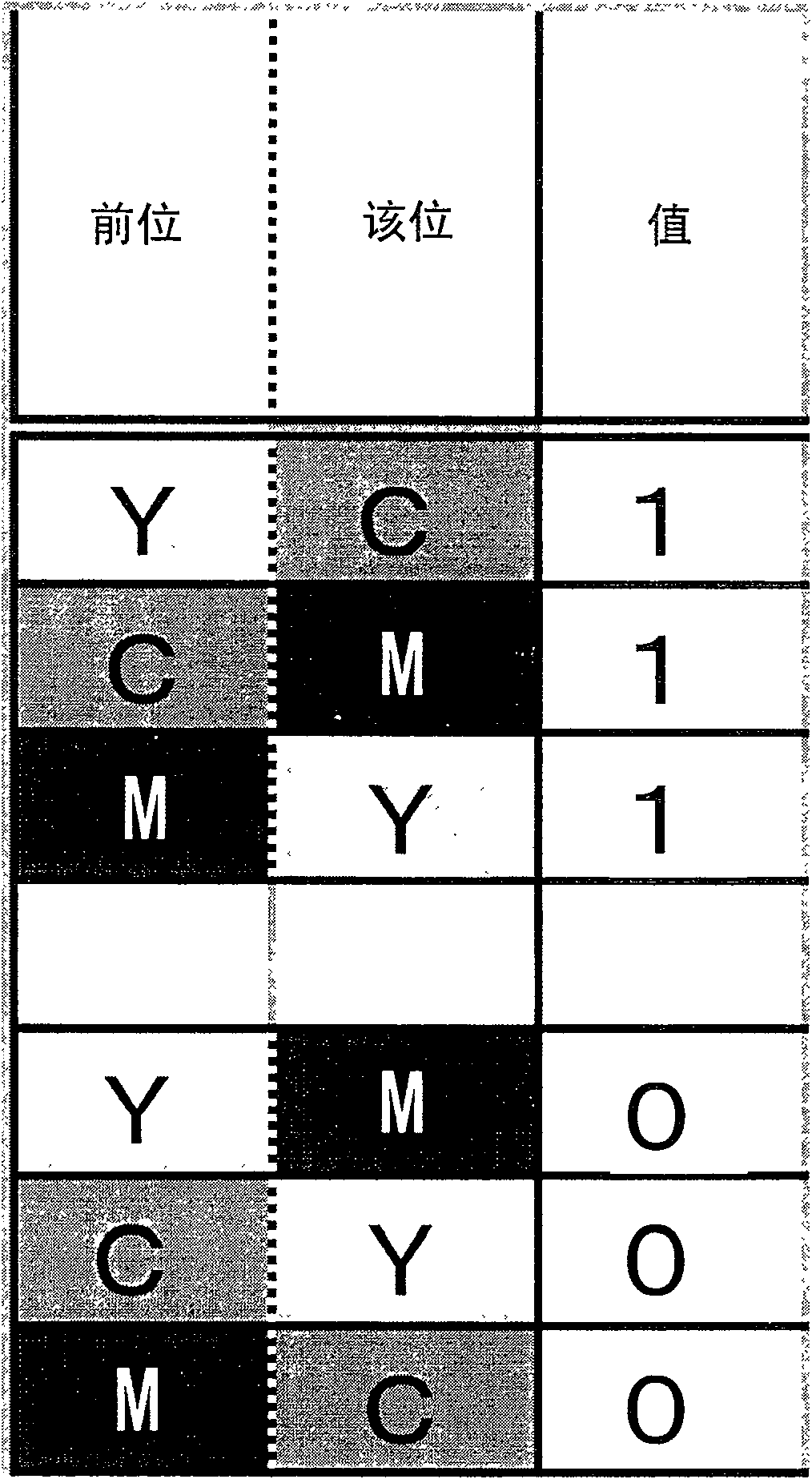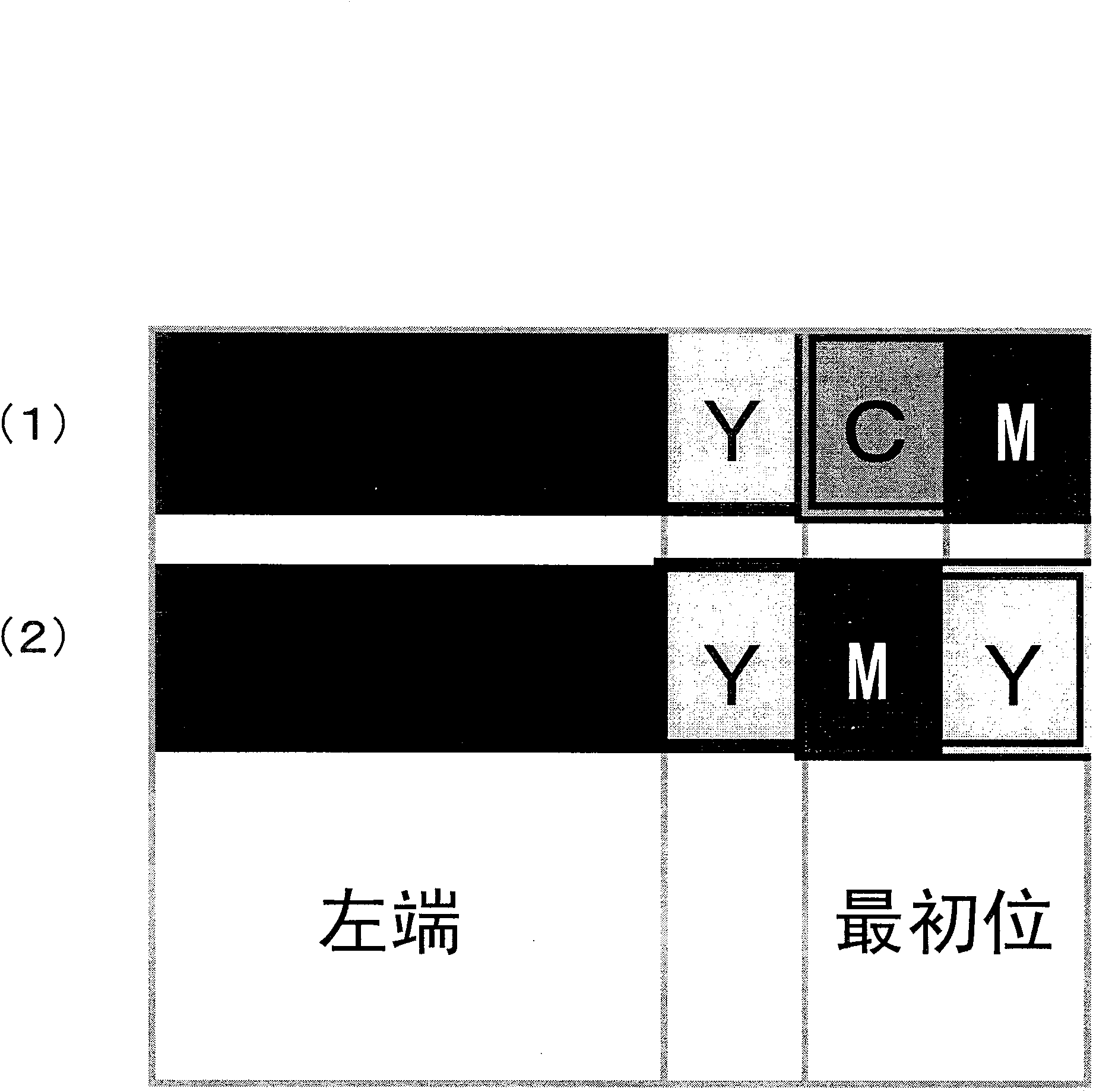Optical symbol, article to which the optical symbol is attached, method for attaching optical symbol to article, optical symbol decoding method, related device, and related program
A symbol and optical technology, applied in the field of optical codes, can solve problems such as difficulty in use and pattern
- Summary
- Abstract
- Description
- Claims
- Application Information
AI Technical Summary
Problems solved by technology
Method used
Image
Examples
Embodiment approach 1
[0266] Below, according to the attached Figure 1-13 Preferred embodiments of the present invention will be described.
[0267] In this embodiment, it is proposed to use an optical symbol code having linearly arranged cells. This optical symbol is a flat symbol and is attached to various items.
[0268] Unit (structural unit) and end unit
[0269] The optical symbol of this embodiment is composed of cells and endpoint cells. The so-called cell is a range / area where one color is added, and various shapes can be obtained. A circle or a square, a triangle, etc. may be used. Optical symbols are formed by arranging the cells in a line.
[0270] In addition, an end point cell is a cell located at an end point of an optical symbol formed by a group of cells connected in a line. In this embodiment, an end point cell is an area / range that is colored differently from cells other than the end point cell. In addition, as will be described later, it is possible to indicate whether...
Embodiment 1-1
[0276] exist figure 1 In , an example of an optical symbol 10 representing a numerical value "12345678" (decimal number) is shown. In this embodiment 1-1, 12345678 is marked as "101111000110000101001110" by the binary method, so in this embodiment 1-1, the binary number is expressed as "101111000110000101001110".
[0277] exist figure 1 In , a square with Y (indicates yellow), M (indicates magenta), C (indicates cyan), etc. is a cell 1012 . A plurality of such units 1012 are connected to form an optical symbol 1010 .
[0278] Also, in the present embodiment 1-1, the constituent elements "0" and "1" of the binary number are as follows figure 2 as indicated in the table. That is, instead of assigning "1" and "0" to the color, "1" and "0" are assigned to the transition of the color. In the first example of this embodiment, black, cyan (C), magenta (M), and yellow (Y) are used, and the color transitions from Y to C, from C to M, and from M to Y represent "1" ( refer to ...
Embodiment 1-2
[0299] Image 6 Indicates an example of encoding numbers, letters, etc. directly (directly without converting them into binary numbers temporarily). exist Image 6 In , three conversion tables representing how each number or letter is converted are expressed. The three types indicate three types prepared for switching from C, switching from M, and switching from Y in accordance with the color of the first cell 1012 .
[0300] That is, in order to represent "0", there are three representation methods of arranging the cells 1012 in the order of "YMYCM", arranging the cells 1012 in the order of "MCMYC", and arranging the cells 1012 in the order of "CYCMY". To match the color of the previous unit 1012, select any one of the three.
[0301] and, Image 6 By the method shown in the present embodiment 1-2, the code system is defined according to the direction in which the colors of adjacent cells 1012 change. exist Figure 7 In , explanatory diagrams showing the relationship of...
PUM
 Login to View More
Login to View More Abstract
Description
Claims
Application Information
 Login to View More
Login to View More - R&D
- Intellectual Property
- Life Sciences
- Materials
- Tech Scout
- Unparalleled Data Quality
- Higher Quality Content
- 60% Fewer Hallucinations
Browse by: Latest US Patents, China's latest patents, Technical Efficacy Thesaurus, Application Domain, Technology Topic, Popular Technical Reports.
© 2025 PatSnap. All rights reserved.Legal|Privacy policy|Modern Slavery Act Transparency Statement|Sitemap|About US| Contact US: help@patsnap.com



